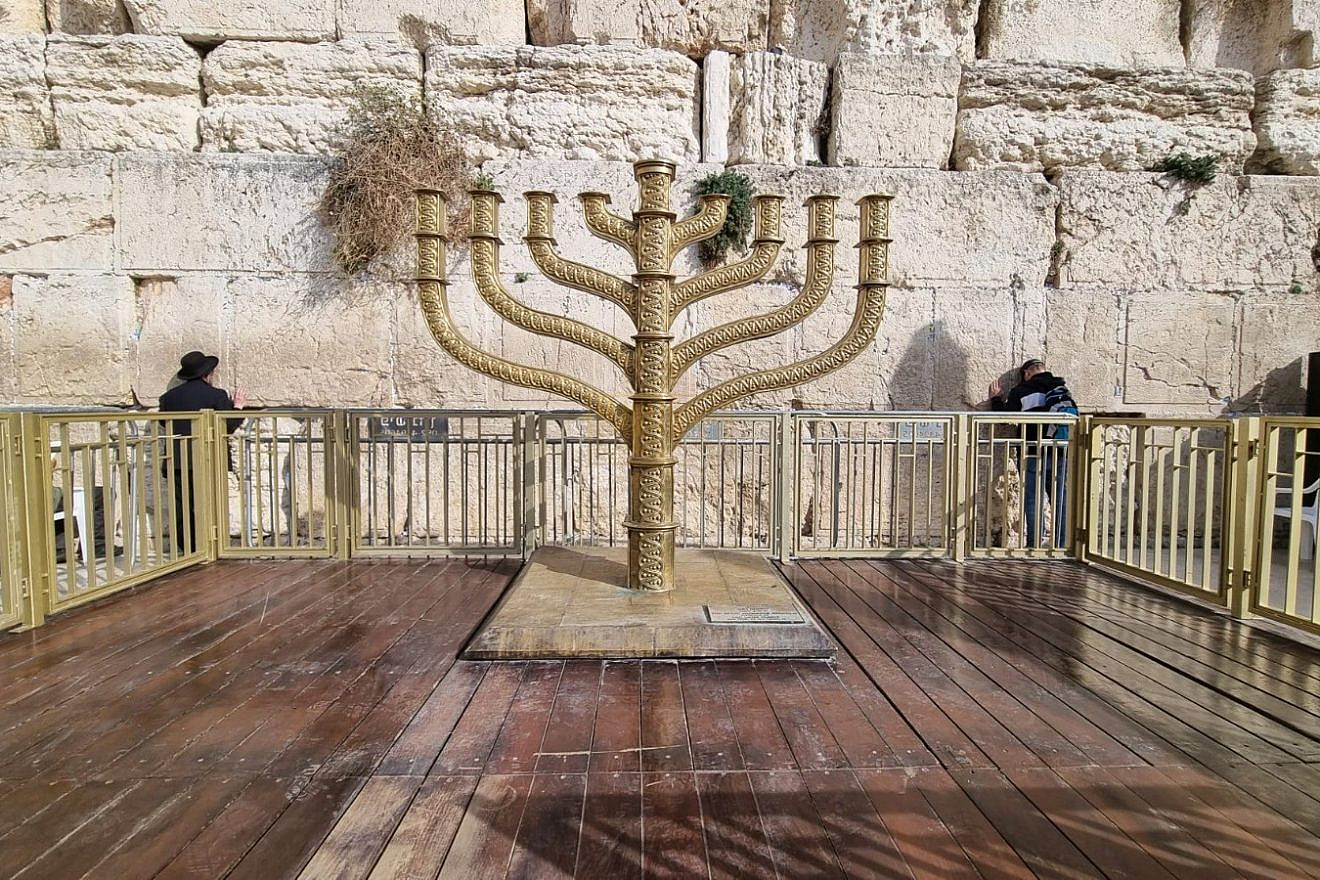The possibility that the menorah used in the Second Temple in Jerusalem is hidden deep in the cellars of the Vatican has excited researchers, rabbis and adventurers for generations.
Let’s jump to the latest development in this 2,000-year-old story. Recently, the Chief Rabbi of Safed Shmuel Eliyahu reported that his son, Israeli Heritage Minister Amichai Eliyahu, had been approached by an Italian parliamentarian. According to the rabbi, the parliamentarian, whose name was not mentioned, suggested jumpstarting the process of the return of the Temple vessels, including the menorah, looted by the Romans from Jerusalem after the destruction of the Second Temple, which, he claimed, were indeed in the Vatican.
This surely would have made headlines, had not many attempts been made in the past to locate the vessels and substantiate the claims about their whereabouts.
For instance, in 2002, in a meeting between then-Israeli Ambassador to the Vatican Oded Ben-Hur and Pope John Paul II, the two agreed to document all Jewish art objects kept in the Vatican. Hebrew University researchers, who were in charge of the project, found no evidence of the menorah’s presence.
The prevailing assumption among researchers is that the famous stone relief on the Arch of Titus in Rome, which depicts the menorah and other vessels carried by Roman soldiers during their triumphal procession from Jerusalem to Rome in 71 C.E., was based on the real gold seven-branched candelabra. Other items looted from the Temple include the gold trumpets, the fire pans for removing the ashes from the altar and the table of showbread.
The candelabra looted from Jerusalem, however, might not have been the original menorah used by the Temple priests in their service. It could have been one of the replacement menorahs that were stored in the Temple for use in case of malfunction or disruption.
This hypothesis is based on the fact that the appearance of the Arch of Titus menorah does not match the description of the menorah in Jewish sources. For instance, the base of the arch menorah is different in that it has three levels that depict various sea and dragon-like features, which was not the case with the original, as any images of animals or creatures were associated with the sin of idolatry.
The first Ashkenazi Chief Rabbi of Israel Yitzhak HaLevi Herzog hypothesized that the original base of the menorah could have broken off and been lost on the way to Rome, and that local craftsmen had to reconstruct it, which is why the arch menorah was carved differently. Scholars have also pointed out that another source, a Genesis Rabbah midrash, which discusses the destruction of the Second Temple, suggests that the menorah taken by the Romans was indeed a replacement one, as do the descriptions of the spoils by historian Flavius Josephus.
Many tried to trace the movements of the menorah taken by the Romans. First, it was apparently deposited in the Roman Temple of Peace. Various theories track the menorah to Constantinople, back to Jerusalem, to Carcassonne in the south of France, to Carthage, then back to Constantinople.
In his book Habayit, Arnon Segal wrote: “During the First Crusade, in 1099, the Crusaders returned the menorah to its former place on the Temple Mount, where it was kept by the Knights Templar. With the conquest of the city by Saladin, the retreating Templars took the menorah with them to Cyprus. In the 13th century, the soldiers of Philip IV, King of France, returned the candelabra to the pope’s cellars in Rome.”
The Vatican has denied time and again that it has any looted Temple vessels in its possessions. As mentioned above, even if a menorah is kept there, it is not likely the one originally used in the Temple, nor the one used by the Hasmoneans in 164 BCE (234 years before the destruction of the Second Temple) when the Chanukah miracle occurred. According to the First Book of Maccabees, the Temple was also looted by the Greeks, including the menorah, which forced the Hasmoneans to light oil in seven iron skewers.
What happened then to the original menorah after the destruction of the Second Temple and where is it today? Both Josephus and the Talmud suggest that the Temple vessels, including the candelabra, were buried during the siege in hidden caves deep underground (as had been the vessels of the First Temple hundreds of years earlier).
Roman soldiers, who tried to find the menorah, only located the replicas and not the candelabra that was used by the priests for the daily candle-lighting service.
In 1981, then-Rabbi of the Western Wall Yehuda Getz attempted to locate the treasures, especially the Ark of the Covenant. Based on Kabbalistic writings, he uncovered a large cave in the Western Wall Tunnels, where the Holy of Holies of the Temple is said to have been located. The search ended in a violent clash between Jews and Muslims. Then-Prime Minister Menachem Begin ordered the opening broken through by Getz to be sealed and the relative quiet in the area returned.
Throughout the generations, and to this day, depictions of the Temple vessels, the menorah in particular, were used to decorate synagogues, mosaic floors, tombs, and Jewish homes.
The same is true of the Jewish community of Gaza. One of the pillars of the Gaza Great Mosque had inscriptions in Hebrew and depicted a menorah, a shofar and an etrog fruit–evidence of the Jewish existence in Gaza during the days of the Talmud.
Originally published by Israel Hayom.

























